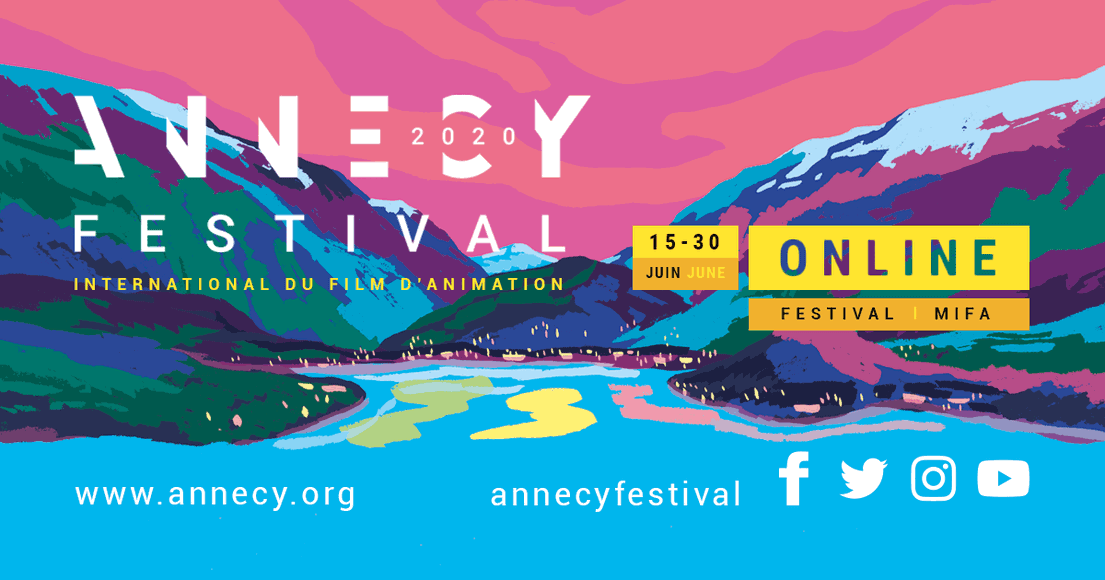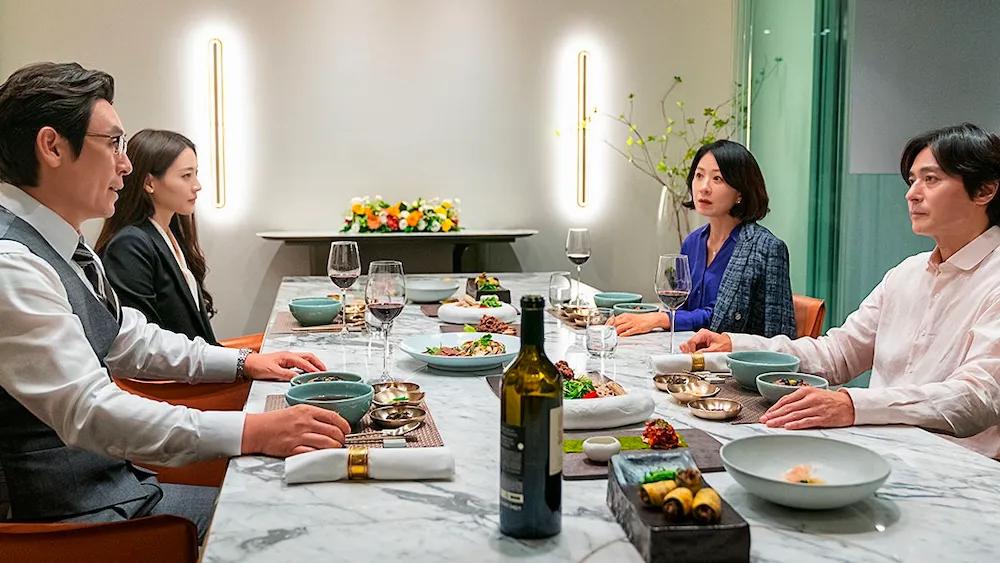The Philippines presents a unique case in animation. Even as one of the world's leading producers of animation, this island-state has only collected around a dozen domestically-directed features in the last century. While journal articles often accuse local talent and limited resources, outsourcing is also to blame. In the US alone, up to 90% of all American TV animation is produced in Asia; in the Philippines, the fourth largest producer of global animation in the 1980s, this translated to as much as $25 billion USD in revenue at its peak. Production may stay at home, but ownership ships overseas.
As a result, local auteur Avid Liongoren makes a point to direct his own films. His second feature, “Hayop Ka! The Nimfa Dimaano Story” recently hit Netflix headlines as the streaming site's first Filipino animated feature. This brightly-colored drama follows the plight of Nimfa Dimaano (Angelica Panganiban), a working-class cat who can never quite settle. She oscillates between her steady janitor boyfriend (Robin Padilla) and her new, wealthy fling (Sam Milby), finding money just as tempting as true love.
Annecy also showcased the movie last week in the festival's coveted Features Competition. Though we could not meet Liongoren in the scenic mountainside town, we still got the chance to speak with them over Zoom. With myself in California and Liongoren in Manila, we probe the global politics of animation outsourcing today. Liongoren animatedly traverses through labor laws, Rule 34, and cancel culture — all deeply intertwined in the struggle for domestically-directed Pinoy animated features.
This interview has been edited and redacted for clarity.
In the beginning of your screener, you mention that “Hayop Ka!” means “You Animal!” in Tagalog — a line often said in Filipino soap operas. Could you elaborate more about the film's origins?
My first film, “Saving Sally”, is a typical boy-girl love story… where the girl has a penis-monster boyfriend. It took us 12 years to make. We won awards and went to a lot of genre festivals, but I didn't know anything about sales and distribution. That was a costly mistake. Making a film is only half the work.
[So my team and I] needed to do something fun and stupid as a palette cleanser. We were stuck in Manila traffic on the way to one of the screenings of our first film, and tuned into an afternoon radio drama on AM. I realized that soap operas are inherently silly because they are so serious; they mirror what a country is going through. I suggested to my team, “Why don't we make this a cartoon? Put silly juxtapositions and put them together? It's a literal take on a curse word.”
It was really meant to be something we could manage in under a year. Our first proof of concept had more rudimentary animation. The plan was to apply for this film grant that would require you to make a film in under 8 months. It's a great motivator and has a built-in audience. It has its own awards, its own press, its own buzz. We presented our project as a pastiche of soap operas and 90s sleazy films – things you would get on Betamax of VHS in the olden days. Then they asked us, “What is your advocacy?” We had no academic backing for it. We just wanted to make something silly. So we didn't get the grant.
So how long did “Hayop Ka!” take you?
The film [you see now] took a little over three years. Twelve to three years! Progress! Maybe I'll make two more films by the time I turn 50. (laughs)
If the grant didn't work out, then how did you find funding?
We were able to fund our own projects by working in advertising. Spring Films, a live action studio came in & co-produced the film by providing the Filipino celeb cast. They would have also been in charge of the Philippine theatrical distribution as they had released many hit films before.
I also met a lot of students when I worked on my first film – they first interned with us and then went on to work for these larger [foreign] studios that would oftentimes abuse them. While there are still more good studios than evil, defying labor laws is just too easy here. We started learning about how bad labor practices in our country are. Since we're artists, we have no idea we're being abused. We just really want to work. Oftentimes, artists don't leave [outsourced animation] jobs because (1) they need it, but (2) they like it.

What are your thoughts on the independent animation industry in the Philippines then?
Like a lot of things in the history of my country, foreigners make use of our resources – whether it be our oceans, our trees, our animators. We [animators] have no choice. Nobody [in the Philippines] is dumb enough to fund an animated project since it doesn't make much profit.
Malaysia is great since they've found out how to make stuff for themselves; Korea too, in 40 years, went from making other people's stuff to what is loved by the rest of the world. That is the dream for a country like ours, which has been colonized by so many imperialists: Spain, America, Japan… It's all tied together.
Just curious: how did your distribution plan for “Hayop Ka!” differ from that for “Saving Sally”?
We planned to go around festivals first and then distribute in Filipino cinemas. But then COVID happened. We used stars to voice our cast – it was all lined up. The festivals, the home, the Filipino celebrities, then COVID happened. COVID killed our festival options. We had no light at the end of the tunnel. It was survival mode.
Our president also grew stronger with COVID — and he closed down the biggest media conglomerate in our country because they pissed him off. That killed our biggest buyer for local rights. It also killed our promotional platform since our celebrities were contract stars of that conglomerate. We knew we wouldn't have our theatrical release anytime soon.
By then, were you already done production?
We were almost done. We were working towards the Fantasia premiere in June, but COVID happened in March. We finished the production in lockdown. Suddenly though, our future was erased. Now, we can't have a theatrical release anymore because of our Netflix Asia release. Not the greatest of deals, but last year it sounded like the only option we had.
The world was falling apart.
It was the apocalypse! One thing leading to our release – but there was a call for a boycott over our film. One of our actors is a strong supporter of our president.
The Philippines is really split – we have our MAGA people who still trust our lord and savior, and then we have the rest of us who are pissed off. There was no room for discourse. If you have a whiff of this person who supports the president, then you are cancelled. So we had a taste of cancel culture. I was called a fascist. I knew anything I would say would be used against me, so I just remained mum.
So your reception…
The feedback was good, but very polarizing because it started with calls for cancellation because of that actor. But we were in Netflix's Top 10 for a while. We got a lot of fan art as well. We also got a lot of scary Rule 34s — any topic will have its XXX version — and our film is definitely prone to furries. They're a wild corner of the Internet.
Also, we faced some lashback for our choice of genre. “Hayop Ka!” the first Filipino animated film on Netflix, but it disappointed some because [the film] is based on soap operas. Soaps are considered a “shit genre” because it's what the masses want — which is dumb. Entertainment is just entertainment, you know? Why watch arthouse cinema about poverty when you live in poverty? Why watch something intellectual when you spend your days breaking your back to make a living? So yeah, we did face some snobbery for showcasing this “shit genre” instead of using animation to “elevate” our culture.
It was a huge relief and form of validation for Annecy to pick us.
Huge congratulations, by the way.
Thank you! For a while there I thought, “Am I that stupid?” I've been submitting to Annecy for almost a decade, since 2012. It's so bittersweet — to be selected during the pandemic.
I want to shift gears and go back to some of the themes in “Hayop Ka!” On the onset, it seems quite similar to “Aggretsuko” – a TV series also about a female animal character who is subject to class dynamics in modern-day Tokyo.
“Aggretsuko” came out while we were in production. We wrote “Hayop Ka” in 2016, started production in 2017, and “Aggretsuko” came out in 2019. If anything, “Aggretsuko” affirmed that there is a niche for putting together cutesy aesthetics with real-world problems. “Bojack Horseman” (2014) also did a good job, but the art style of “Bojack” tells you that it's not meant for kids. “Aggretsuko” was a great assurance that we're on the right track. We wanted to give this shitty life a colorful design.
I was also struck by how much the landscape changes too – with Manila, the private island, the outskirts.
Very few Filipino animation artists can draw their own surroundings; they're so used to drawing Tokyo or New York. We had to tell our artists, “This is supposed to look like the Philippines, not the US or Japan! We are animating things outside our windows!”

And the use of English versus Tagalog?
Here in the Philippines, even though we're bilingual, English is still the language of the rich. People who speak English in their day-to-day are rich people. Code-switching is a cultural thing. It's a class thing for us brown Asians. English is more of a social status marker than a skill.
For a Philippines-centric film, did you face any cultural barriers abroad?
When I workshopped the project, I brought it to different incubators. Everytime I exposed it to white progressive folks, they'd be shocked by the misogyny. But everytime a Latin mentor looked at it, they would get it. These are the tropes of these areas. One of the things we changed when workshopping – there used to be a scene where Roger slaps Nimfa.
Oh!
Yeah, exactly. When we were writing it, it was justified since Nimfa cheated. That was the great thing of workshopping though — we get the perspective from other people. We heard, “If he hits her, even if she did wrong and he was in the right — when you hit a woman, it is irreconcilable. He will be 100% in the wrong after that. Irredeemable. You do not hit a woman.” That's why she just falls down when tries to kiss him. It's more hardcore for us in the Third World.
If you were to continue the story, would Nimfa have a happy ending?
We didn't give her a super happy ending since it's a self-actualization. We're actually writing a sequel right now about Jerry. We were actually surprised. We got so much fanart of Jerry – so we shrugged and decided to make a film about him.
The one good guy!
The next film will be about Jerry going up the social ladder. He'll have a better security job that'll potentially destroy the shanty towns where he's from (and where Nimfa lives). Who does he choose? His employment or where he came from?
We're also devising a spinoff with Papa Jorge. He'll take more calls from other characters, and he'll give them a tongue-lashing for their choices in life.
You covered everything I wanted to ask you. Is there anything else you want to share about your film?
Watch “Saving Sally” since it took 12 years to make! It's only available on Netflix everywhere except for North America.
So we have to get a VPN.
It's also in the depths of Amazon, in case you want to avoid the hassle. (laughs)
















